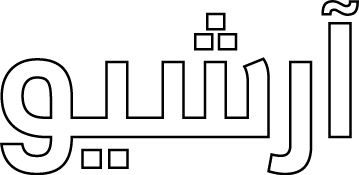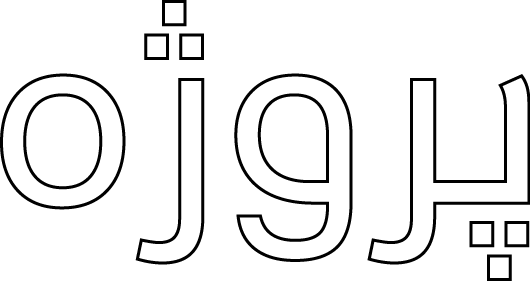—Sohrab Shahid Saless, 1975 in the press booklet for FAR FROM HOME
Sohrab Shahid Saless shot 13 films in Germany between 1975-1991, and yet his work remains largely unknown in film history today. Although his films were shown at important festivals in Berlin, Cannes, and New York, they are largely unavailable today—and if they are, then only on prints of bad quality. Even during his lifetime, Saless himself consistently pointed out the hurdles of German film funding, not least because his history of migration made it more difficult for him to get financial support for his films there. In 2016 the Zeughauskino in Berlin showed a first comprehensive retrospective of his films. This marked the beginning of a journey that makes clear the importance of access to archives, since the films today can be found not only in Iran and in Germany, but also in other European countries. For Saless not only left Iran, but later also West Germany for Czechoslovakia and Chicago, where he spent the last years of his life. His migratory life leaves behind a world of movements and changes in viewpoint. The films are like microscopic observations running throughout a variety of societies. Marginal and displaced characters were of particular interest to him, he discovers what's special about our lives in the trivial matters of our daily routines. His film work is therefore not only marked by biography, but also by a transnational aesthetics. It spans out between countries, but also and at the same time between artistic influences in film history. The images, colors, and stories inscribe several cultural perspectives into the filmstrips.
Since 2021 the SHAHID SALESS ARCHIVE has been working on a three-part project: a restoration and digitization of his entire output, a multilingual publication, and a web archive, all following three main goals: accessibility, mediation, and the interactive preservation of knowledge.
Transnational films are difficult to archive. The heterogeneity of their affiliations becomes a disadvantage for protecting the work, which then has consequences for reception. What already curtailed Saless’s productivity during his lifetime is being perpetuated today through the dispersal of his work in a variety of different television archives. The SHAHID SALESS ARCHIVE seeks to change this, and is using the edition project as the occasion to prepare a new web archive about Saless online. The digital space makes it possible to circumvent the limitations of a national location and furthermore to create a structure that is accessible to nearly everybody, independent and open to collective expansion.
The SHAHID SALESS ARCHIVE wants to share the knowledge about the archival distribution of the films with the public so that the films can both be easier to find for a professional audience of academics, cinema owners, and curators, and be more available to a wider audience. It thus transposes into the digital realm the qualities of analog archives as institutions that collect and create accessibility. The idea of simply preserving the material is therefore displaced by the principle of “sharing material,” which is the source of all accessibility.
The website will be continuously updated to provide information concerning both the current state of the project as well as all international screenings of Saless’s films.
If you yourself possess material that could help the newly emerging archive, or if you want to contribute ideas because you have already done work on Saless, we would be delighted to hear from you.

سهراب شهید ثالث تعداد سیزده فیلم را بین سال های 1975-1991 در جمهوری آلمان ساخته است. با این حال آثار وی تا حد زیادی در تاریخ سینمای امروز ناشناخته مانده اند. اگرچه فیلم های او در جشنواره های مهمی مانند برلین، کن و نیویورک به نمایش درآمده اند، اکنون یا در دسترس نمی باشند و یا با کیفیت بسیار پایینی قابل ارائه هستند. حتی در طول زندگیاش، شهید ثالث خود همواره به موانع موجود بر سر راه تأمین بودجه فیلم هایش از طریق پشتیبانی مالی در آلمان اشاره کرده بود، به خصوص که سابقه مهاجرت او باعث میشد تا این تلاش دشوارتر هم بشود. در سال 2016 زویگهاوس برلین اولین گردهمایی مروری بر آثار شهید ثالث را برگزار کرد. نقطه آغازین سفری که مشخص می کند، تا چه اندازه دسترسی داشتن به آرشیوها دارای اهمیت می باشد، چرا که اکنون فیلم های وی در ایران، آلمان و همچنین در سایر کشورهای اروپایی قابل یافتن هستند.
شهید ثالث البته نه تنها ایران، بلکه بعدتر جمهوری فدرال آلمان را نیز برای اقامت در چکسلواکی و شیکاگو ترک کرد، شهری که وی سال های پایانی زندگی خود را در آن گذراند. زندگی مهاجرتی او نه تنها موجب جابجایی، بلکه سبب تغییر کردن دیدگاه های وی نیز هست. به همین ترتیب میتوان فیلم های او را مشاهده ایی ریزبینانه در جوامع گوناگون دانست. او به خصوص به چهره های در حاشیه که سرکوب می شوند، علاقه خود را نشان داده است. وی ویژگی های زندگی ما را در مسائل پیش پا افتاده روزمره، کشف می کند. فیلم های او با این که به عنوان فیلم های بیوگرافیک شناخته می شوند، اما از نظر زیبایی شناختی فراملی هستند. آنها نه تنها در کشورهای مختلف طرفداران خویش را دارند، بلکه در عین حال در بحث های مربوط به تأثیرات هنری تاریخ فیلم نیز پر طرفدار هستند. فیلم های وی تصاویر، رنگها و داستانهایی هستند که دیدگاههای فرهنگی متعددی را بر روی نوار فیلم حک میکنند.

از سال 2021 آرشیو شهید ثالث بر روی یک پروژه سه منظوره فعالیت می کند: بازسازی و دیجیتال کردن همه آثار او، انتشار یک نشریه چند زبانه و همچنین به راه اندازی یک آرشیو وب از آثار شهید ثالث. این پروژه سه هدف را دنبال می کند: قابلیت دسترسی، میانجی گری و تعامل در ایمن سازی دانش مربوطه.
آرشیو کردن فیلم های فراملی آسان نیست. بخصوص که تولیدات شهید ثالث در زمان حیاتش امروزه به صورت پراکنده در آرشیوهای مختلف تلویزیونی قابل یافت می باشند. متعلق بودن ناهمگون فیلم های شهید ثالث تبدیل به یک ضعف برای تامین امنیت آثار وی شده، به نحوی که پیامدهایی برای پذیرش آنها به همراه دارد. آرشیو شهید ثالث در پی تغییر این رویه بوده و این پروژه سه منظوره را به عنوان فرصتی برای آماده سازی یک آرشیو-وب جدید برای وی به صورت آنلاین می بیند. چرا که فضای دیجیتال امکان عبور از یک فرصت لزوما ملی را فراهم می کند وهمچنین ساختاری ایجاد خواهد کرد تا نه تنها برای همه قابل دسترس باشد، بلکه مستقل بوده و مسیر را برای یک پیشرفت جمعی مهیا می کند.
آرشیو شهید ثالث با هدف به اشتراک گذاشتن دانش فهرست سازی آرشیوی فیلمها با عموم مردم، قصد دارد تا نه تنها یافتن فیلمها برای مخاطبان حرفهای متشکل از محققان، صاحبان سینما و برگزارکنندگان نمایشگاه ها آسانتر شود، بلکه دسترسی به آثار برای گروه گسترده تری از علاقه مندان امکان پذیر گردد. بدین صورت در فضای دیجیتال آن چه که توسط یک آرشیو آنالوگ به عنوان یک موسسه جمع آوری شده است، گردآوری و از نو پخش می شود. بدین ترتیب ایده تنها در پی حفظ آثار بودن، با اصل اشتراک گذاری آنها جایگزین می شود تا منبعی گردد برای دسترسی همه گانی.
وب سایت حاضر نه تنها شما را از وضعیت کنونی پروژه آگاه می کند، بلکه از تمامی اکران های مهم فیلم های شهید ثالث در سرتا سر جهان به شما اطلاعات می دهد.
چنانچه شما مطلب یا متریالی در اختیار دارید که می تواند به این آرشیو نوپا کمک کند و یا نظراتی در زمینه مشارکت جستن در پروژه دارید، چرا که بر آثار شهید ثالث کار کرده اید، باعث خوشحالی ما خواهد بود که با ما ارتباط بگیرید.


Sohrab Shahid Saless shot 13 films in Germany between 1975-1991, and yet his work remains largely unknown in film history today. Although his films were shown at important festivals in Berlin, Cannes, and New York, they are largely unavailable today—and if they are, then only on prints of bad quality. Even during his lifetime, Saless himself consistently pointed out the hurdles of German film funding, not least because his history of migration made it more difficult for him to get financial support for his films there. In 2016 the Zeughauskino in Berlin showed a first comprehensive retrospective of his films. This marked the beginning of a journey that makes clear the importance of access to archives, since the films today can be found not only in Iran and in Germany, but also in other European countries. For Saless not only left Iran, but later also West Germany for Czechoslovakia and Chicago, where he spent the last years of his life. His migratory life leaves behind a world of movements and changes in viewpoint. The films are like microscopic observations running throughout a variety of societies. Marginal and displaced characters were of particular interest to him, he discovers what's special about our lives in the trivial matters of our daily routines. His film work is therefore not only marked by biography, but also by a transnational aesthetics. It spans out between countries, but also and at the same time between artistic influences in film history. The images, colors, and stories inscribe several cultural perspectives into the filmstrips.

Since 2021 the SHAHID SALESS ARCHIVE has been working on a three-part project: a restoration and digitization of his entire output, a multilingual publication, and a web archive, all following three main goals: accessibility, mediation, and the interactive preservation of knowledge.
Transnational films are difficult to archive. The heterogeneity of their affiliations becomes a disadvantage for protecting the work, which then has consequences for reception. What already curtailed Saless’s productivity during his lifetime is being perpetuated today through the dispersal of his work in a variety of different television archives. The SHAHID SALESS ARCHIVE seeks to change this, and is using the edition project as the occasion to prepare a new web archive about Saless online. The digital space makes it possible to circumvent the limitations of a national location and furthermore to create a structure that is accessible to nearly everybody, independent and open to collective expansion.
The SHAHID SALESS ARCHIVE wants to share the knowledge about the archival distribution of the films with the public so that the films can both be easier to find for a professional audience of academics, cinema owners, and curators, and be more available to a wider audience. It thus transposes into the digital realm the qualities of analog archives as institutions that collect and create accessibility. The idea of simply preserving the material is therefore displaced by the principle of “sharing material,” which is the source of all accessibility.
The website will be continuously updated to provide information concerning both the current state of the project as well as all international screenings of Saless’s films.
If you yourself possess material that could help the newly emerging archive, or if you want to contribute ideas because you have already done work on Saless, we would be delighted to hear from you.

سهراب شهید ثالث تعداد سیزده فیلم را بین سال های 1975-1991 در جمهوری آلمان ساخته است. با این حال آثار وی تا حد زیادی در تاریخ سینمای امروز ناشناخته مانده اند. اگرچه فیلم های او در جشنواره های مهمی مانند برلین، کن و نیویورک به نمایش درآمده اند، اکنون یا در دسترس نمی باشند و یا با کیفیت بسیار پایینی قابل ارائه هستند. حتی در طول زندگیاش، شهید ثالث خود همواره به موانع موجود بر سر راه تأمین بودجه فیلم هایش از طریق پشتیبانی مالی در آلمان اشاره کرده بود، به خصوص که سابقه مهاجرت او باعث میشد تا این تلاش دشوارتر هم بشود. در سال 2016 زویگهاوس برلین اولین گردهمایی مروری بر آثار شهید ثالث را برگزار کرد. نقطه آغازین سفری که مشخص می کند، تا چه اندازه دسترسی داشتن به آرشیوها دارای اهمیت می باشد، چرا که اکنون فیلم های وی در ایران، آلمان و همچنین در سایر کشورهای اروپایی قابل یافتن هستند.
شهید ثالث البته نه تنها ایران، بلکه بعدتر جمهوری فدرال آلمان را نیز برای اقامت در چکسلواکی و شیکاگو ترک کرد، شهری که وی سال های پایانی زندگی خود را در آن گذراند. زندگی مهاجرتی او نه تنها موجب جابجایی، بلکه سبب تغییر کردن دیدگاه های وی نیز هست. به همین ترتیب میتوان فیلم های او را مشاهده ایی ریزبینانه در جوامع گوناگون دانست. او به خصوص به چهره های در حاشیه که سرکوب می شوند، علاقه خود را نشان داده است. وی ویژگی های زندگی ما را در مسائل پیش پا افتاده روزمره، کشف می کند. فیلم های او با این که به عنوان فیلم های بیوگرافیک شناخته می شوند، اما از نظر زیبایی شناختی فراملی هستند. آنها نه تنها در کشورهای مختلف طرفداران خویش را دارند، بلکه در عین حال در بحث های مربوط به تأثیرات هنری تاریخ فیلم نیز پر طرفدار هستند. فیلم های وی تصاویر، رنگها و داستانهایی هستند که دیدگاههای فرهنگی متعددی را بر روی نوار فیلم حک میکنند.

از سال 2021 آرشیو شهید ثالث بر روی یک پروژه سه منظوره فعالیت می کند: بازسازی و دیجیتال کردن همه آثار او، انتشار یک نشریه چند زبانه و همچنین به راه اندازی یک آرشیو وب از آثار شهید ثالث. این پروژه سه هدف را دنبال می کند: قابلیت دسترسی، میانجی گری و تعامل در ایمن سازی دانش مربوطه.
آرشیو کردن فیلم های فراملی آسان نیست. بخصوص که تولیدات شهید ثالث در زمان حیاتش امروزه به صورت پراکنده در آرشیوهای مختلف تلویزیونی قابل یافت می باشند. متعلق بودن ناهمگون فیلم های شهید ثالث تبدیل به یک ضعف برای تامین امنیت آثار وی شده، به نحوی که پیامدهایی برای پذیرش آنها به همراه دارد. آرشیو شهید ثالث در پی تغییر این رویه بوده و این پروژه سه منظوره را به عنوان فرصتی برای آماده سازی یک آرشیو-وب جدید برای وی به صورت آنلاین می بیند. چرا که فضای دیجیتال امکان عبور از یک فرصت لزوما ملی را فراهم می کند وهمچنین ساختاری ایجاد خواهد کرد تا نه تنها برای همه قابل دسترس باشد، بلکه مستقل بوده و مسیر را برای یک پیشرفت جمعی مهیا می کند.
آرشیو شهید ثالث با هدف به اشتراک گذاشتن دانش فهرست سازی آرشیوی فیلمها با عموم مردم، قصد دارد تا نه تنها یافتن فیلمها برای مخاطبان حرفهای متشکل از محققان، صاحبان سینما و برگزارکنندگان نمایشگاه ها آسانتر شود، بلکه دسترسی به آثار برای گروه گسترده تری از علاقه مندان امکان پذیر گردد. بدین صورت در فضای دیجیتال آن چه که توسط یک آرشیو آنالوگ به عنوان یک موسسه جمع آوری شده است، گردآوری و از نو پخش می شود. بدین ترتیب ایده تنها در پی حفظ آثار بودن، با اصل اشتراک گذاری آنها جایگزین می شود تا منبعی گردد برای دسترسی همه گانی.
وب سایت حاضر نه تنها شما را از وضعیت کنونی پروژه آگاه می کند، بلکه از تمامی اکران های مهم فیلم های شهید ثالث در سرتا سر جهان به شما اطلاعات می دهد.
چنانچه شما مطلب یا متریالی در اختیار دارید که می تواند به این آرشیو نوپا کمک کند و یا نظراتی در زمینه مشارکت جستن در پروژه دارید، چرا که بر آثار شهید ثالث کار کرده اید، باعث خوشحالی ما خواهد بود که با ما ارتباط بگیرید.
We use cookies to optimize our website and service.